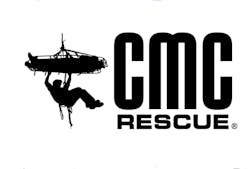NFSA Business & Leadership Conference
The National Fire Sprinkler Association (NFSA) will hold its 2016 Annual Seminar, entitled the Business & Leadership Conference, May 3–6 at the Laguna Cliffs Marriott in Dana Point, CA. The event is packed with opportunities for you and your team to grow. The lineup of speakers include General Session speaker, Kevin Frieberg (author of Be a Person of Impact, Do Something Now, Nanovation, Boom!, Guts! and Nuts!) and Tim Sendelbach (Firehouse Magazine Editor in Chief) and a very special talk show (Fastest Water).
The conference will feature nationally renowned business, association and technical speakers, interactive breakout sessions, unique networking opportunities and the first Common Voices Golf Outing!
Please visit http://tinyurl.com/jacdhjb to register.
Firefighters Have Stressful Jobs
In a recent website ranking of the most stressful jobs of 2016, firefighters ranked second, behind only enlisted military personnel and just ahead of airline pilots and police officers.
Every one of us endures stress of some kind in our workplace, but a quality defining many of the CareerCast.com most stressful jobs of 2016 is that stress is virtually omnipresent, and the spikes in periods of high stress are unpredictable.
Stress, as defined by the Jobs Rated methodology, is determined by 11 factors: travel, deadlines, working in the public eye, competitiveness, physical demands, environmental conditions, hazards encountered, the life of oneself or others at risk, meeting and interacting with customers and/or the public, and the potential for job growth.
Firefighters, military personnel and police officers face life-threatening situations routinely as a fundamental part of their jobs.
The 10 most stressful jobs, according to this poll, are:
- Enlisted Military Personnel
- Firefighter
- Airline Pilot
- Police Officer
- Event Coordinator
- Public Relations Executive
- Corporative Executive (Senior)
- Broadcaster
- Newspaper Reporter
- Taxi Driver
CMC Rescue Makes Donation to YOSAR Rescue Teams
CMC Rescue, Inc., in partnership with KASK America, has donated 32 helmets and 12 clear helmet visors to members of the Yosemite Search and Rescue (YOSAR) team.
Each year, an average of 250 visitors are lost, injured or die in the 1,500 square miles of the mostly rugged terrain that constitutes Yosemite National Park located in California’s Sierra Nevada mountains. The new helmets will be used first at YOSAR’s rescue training held at Tuolumne Meadows in the eastern section of the park. The high-visibility yellow color with reflective and glow-in-the dark features will increase the team’s nighttime exposure. YOSAR’s helicopter rescue team will add anti-fog, scratch-resistant KASK visors to their helmets.
“We know that having the proper equipment for each critical call is of the utmost importance for safety and efficiency,” said Joe Flachman, CMC Rescue’s business development manager. “Because our company’s mandate has always been to offer the best specialized equipment available for rescuers, we were pleased to partner with KASK America as a distributor and to jointly offer this donation to YOSAR.”
Gian Paolo Pasini, president and CEO of KASK America Inc. said, “YOSAR has been, throughout its history, one of the most innovative rescue organizations worldwide, especially with regards to Heli Rescue techniques. Hence, it is a great honor for us to support the men and women of the YOSAR team with our search and rescue helmets.”
Beware of the “Invisible Killer”
With winter in full swing, the USFA warns us about the “Invisible Killer” that strikes most often during the winter months. Carbon monoxide (CO)is called the “Invisible Killer” because it's a colorless, odorless, poisonous gas. More than 150 people in the Unites States die every year from accidental non-fire-related CO poisoning associated with consumer products, including generators. Other products include faulty, improperly used or incorrectly-vented fuel-burning appliances such as furnaces, stoves, water heaters and fireplaces.
Because CO is otherwise undetectable to the human senses, people may not know that they are being exposed. The initial symptoms of low to moderate CO poisoning are similar to the flu (but without the fever). They include:
- Headache
- Fatigue
- Shortness of breath
- Nausea
- Dizziness
High-level CO poisoning results in progressively more severe symptoms, including:
- Mental confusion
- Vomiting
- Loss of muscular coordination
- Loss of consciousness
- Ultimately death
Source: Consumer Product Safety Commission
This Month in Fire History
Jan. 1, 1853, Cincinnati, OH
The first fire engine is tested
Jan. 5, 1985, Erath, CA
Texaco gas plant fire causes $51 million in damages
Jan. 6, 1961, San Francisco, CA
Thomas Hotel fire kills 20
Jan. 10, 1976, Fremont, NE
Pathfinder Hotel fire kills 20
Jan. 11, 1820, Savannah, GA
Fire damages 463 houses
Jan. 12, 1908: Boyertown, PA
Rhodes Opera House fire kills 170
Jan. 14, 1969, Pearl Harbor, HI
USS Enterprise carrier fire kills 24
Jan. 27, 1967, Cape Kennedy, FL
Apollo 1 launch pad fire kills all three crewmembers
Jan. 28, 1986
Challenger spacecraft explosion kills seven
Courtesy NFPA
About the Author
Firehouse Staff
Content written and created by Firehouse Magazine editors.
